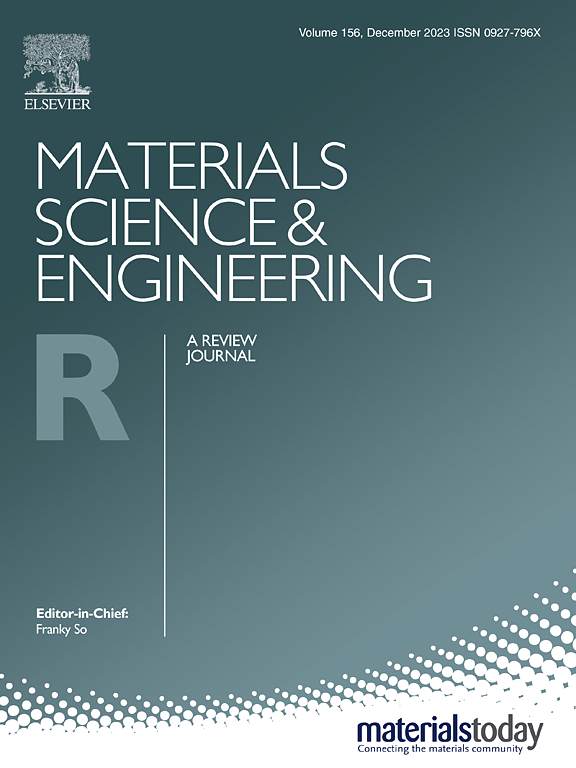Growth, structures, properties, and applications of 2D materials comprising black phosphorous-like structures with highly in-plane anisotropy
IF 31.6
1区 材料科学
Q1 MATERIALS SCIENCE, MULTIDISCIPLINARY
引用次数: 0
Abstract
Black phosphorus (BP), with its unique puckered honeycomb structure defined by armchair and zigzag chains, has gained significant attention owing to its tunable direct bandgap, high carrier mobility, and pronounced anisotropic behavior. These attributes make BP a leading candidate for next-generation electronics, optoelectronics, and sensors. However, its application is limited by significant challenges, such as instability under environmental conditions and the difficulty of synthesizing large-area, high-quality nanofilms. To overcome these obstacles and study their unique behaviors, researchers are turning to BP-like materials. The materials offer enhanced environmental stability and easier fabrication while retaining the beneficial properties of BP. BP analogs include Group V (phosphorus and arsenic) materials and Group IV-VI two-dimensional (2D) semiconductors, both showcasing distinctive advantages and expanding the horizons of 2D materials research. With tunable bandgaps, high carrier mobilities, and robust environmental stabilities, these materials open new pathways for the development of innovative applications and technologies. This review covers the crystal structures, properties, and synthesis techniques of BP and its analogs, providing a comparative analysis of their strengths and limitations. By highlighting the breakthroughs and challenges in this field, this paper aims to inspire further exploration into the design and application of these advanced materials, paving the way for transformative innovations in nanotechnology.
具有高度平面内各向异性的类黑磷结构的二维材料的生长、结构、性质和应用
黑磷(BP)具有独特的折叠蜂窝结构,由扶手状和之字形链定义,由于其可调的直接带隙,高载流子迁移率和明显的各向异性行为而受到广泛关注。这些特性使BP成为下一代电子、光电子和传感器的主要候选产品。然而,它的应用受到重大挑战的限制,例如在环境条件下的不稳定性和合成大面积、高质量纳米膜的困难。为了克服这些障碍并研究它们的独特行为,研究人员正在转向类似bp的材料。这些材料提供了增强的环境稳定性和更容易制造,同时保留了BP的有益特性。BP类似物包括V族(磷和砷)材料和IV-VI族二维(2D)半导体,两者都具有独特的优势,拓展了二维材料研究的视野。这些材料具有可调的带隙、高载流子迁移率和强大的环境稳定性,为创新应用和技术的发展开辟了新的途径。本文综述了BP及其类似物的晶体结构、性质和合成技术,并对其优缺点进行了比较分析。通过强调该领域的突破和挑战,本文旨在激发对这些先进材料的设计和应用的进一步探索,为纳米技术的变革性创新铺平道路。
本文章由计算机程序翻译,如有差异,请以英文原文为准。
求助全文
约1分钟内获得全文
求助全文
来源期刊

Materials Science and Engineering: R: Reports
工程技术-材料科学:综合
CiteScore
60.50
自引率
0.30%
发文量
19
审稿时长
34 days
期刊介绍:
Materials Science & Engineering R: Reports is a journal that covers a wide range of topics in the field of materials science and engineering. It publishes both experimental and theoretical research papers, providing background information and critical assessments on various topics. The journal aims to publish high-quality and novel research papers and reviews.
The subject areas covered by the journal include Materials Science (General), Electronic Materials, Optical Materials, and Magnetic Materials. In addition to regular issues, the journal also publishes special issues on key themes in the field of materials science, including Energy Materials, Materials for Health, Materials Discovery, Innovation for High Value Manufacturing, and Sustainable Materials development.
 求助内容:
求助内容: 应助结果提醒方式:
应助结果提醒方式:


